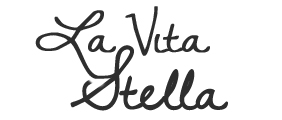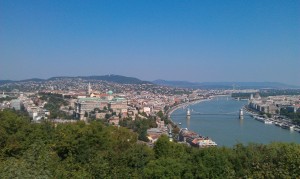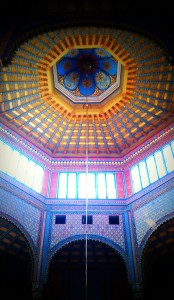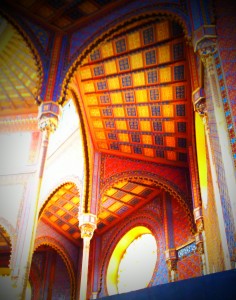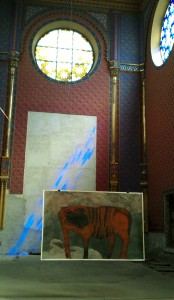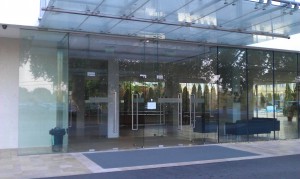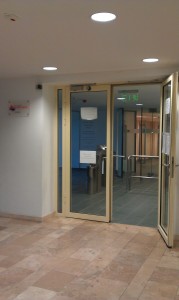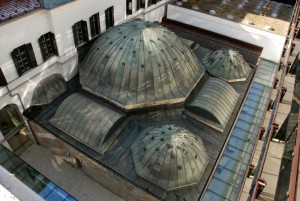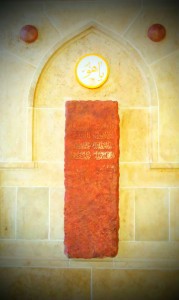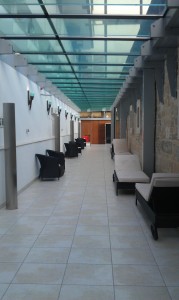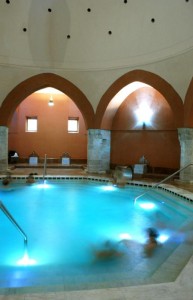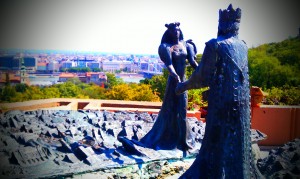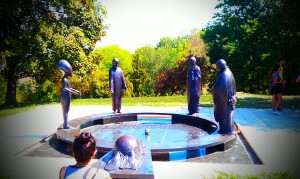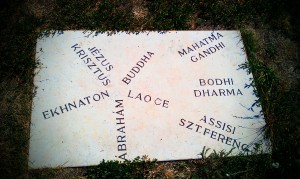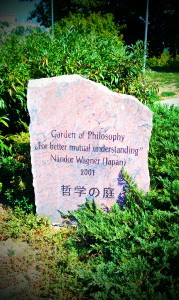There are many clichéd impressions of Budapest; some are true and some are simply assumptions however tourist books aside, there is much to be discovered when journeying purely on foot. I do not shy away from public transport, on the contrary, the passenger function is clearly alleviated when the assistance of car, tram or bus administers the wandering and eases the soles. On this trip however, in contrast to all others (one does have roots firmly in Hungary y’know) I wanted to gain a deeper insight to the ‘Pearl of the Danube’.
And so with the companionship of my dear friend Mona, explore it I did, and whilst doing so I came across a few gems to add to the already fond memories I have of the city.
-
Rumbach Sebestyen Synagogue, VII Rumbach Sebestyén utca 11-13, U-Bahn 1, 2, 3: Deák Ferenc tér
On day 1 of our wanderings, an aimless jaunt led us to this unbeaten treat. For a mere 500HUF, enter into an early Art Nouveau work by Otto Wagner, originally a Synagogue built with the intention to provide a more visually pleasing place of worship to the alternative, less aesthetic Great Synagogue nearby.
Visually pleasing it was indeed, and although sadly it is now desolate and left to decay, it’s relics and interior still satisfies the artistic reflection, only supported by the interesting works of art that thankfully utilised this space as a mini-exhibition. The bright colours and detailed designs were so vivid, even the light streaming through 1 blue glass window looked like splashes of bright paint on its rear walls. No words were necessary whilst I peered around in awe of it’s tainted beauty. I hope it is left to fade peacefully for many a nomad to discover. Beautiful.
-
Veli Bej Fürdő – Historic renovated 400 year old Turkish Baths on Buda Side
My cousin Dani made this suggestion as I was not inclined to add to the body count at Szechenyi, the chieftain of baths in the area and on many a to-do list so when he mentioned a secret, hidden away location that was almost labyrinth like on entrance, I was immediately intrigued.
A shabby hospital provides a temporary through-way to this bath, not yet open to the public (renovation period) and as you side step onwards past the grubby hallway, you will arrive down some stairs to this cavernous seclusion.
Not quite how the legend came to light though. Mona and I dragged our blistered, worn out feet up through the Buda hills and over towards Frankel Leo Utca where the online and verbal words of mouth had pointed, but au-contrare!
After a few telephone calls, picture messaging of our location and a rather tangled up conversation with a local (note to self; must master the basics of Magyarul), it was whilst strutting down some steps whilst talking on the phone on what seemed a fruitless pilgrimage that I spied the domes to these baths. I felt like stabbing a flag of discovery through the ground and leaping in the air!
Budai Irgalmasrendi Hospital had smartened up, and indeed, entrance was permissible (and not via a dingy corridor). For the miserly fee of 2000HUF (cash only), we entered the sanitary reception with the assistance of very amiable ladies and trotted downstairs to investigate the delights (in fact, one lady in particular was so kind as we had unfortunately forgotten to bring a towel. They DO NOT provide towels however with a shameful, earnest look on my face, pity was granted and we utilised two splendid tablecloths instead).
Veli Bej’s heart and soul lies in the main Turkish Bath itself; a naturally heated thermal bath. The other facilities onsite included a jacuzzi, a small pool to swim around, a couple of other smaller pools and the pre-requisite sauna and steamroom. Plentiful sun loungers were the only litter in the hallways so you could rest your weary feet and wetter (but more refreshed) bodies.
As the public are not so privvy to it, I had the serene fortune of having a whole 15 minutes solo whilst Mona was being massaged. Staring up at the blue lit ceiling, I floated star-fish like, head submerged and in complete calm. A regression to the womb was invoked and I felt comforted in the warm waters.
Spas are indeed a treat in Hungary, so this was one to add to the jewels.
3. The Philosophers Garden, Citadella
The Citadel is the pinnacle sight spot for many a visitor to Budapest. By night or by day, it is equally beautiful to behold the great city from these heights and gaze on it’s picturesque and post-card like perfection. The Citadel itself, like many a monument in Budapest is another testament to its liberty and I recommend paying a visit up there at some point, but I must insist you do it on foot. It is a well earned reward after forcing each limb up the steep gradient and defying gravity to make it to the top. There are various side routes up there, however if you go up past the Gellert Hotel, the paths will lead you easily (2 routes though; 1 is simple and up to to the Citadel itself, but take a right itself and you will pass by various viewing spots which provide almost even better views of the Danube than at the top).
On descending from the tourist coach frenzy at the top, we strolled past a signpost for these Philosophers Gardens. Opened in 2001, it was a wonderfully calm breath of air. A small sculpture stood gracefully, with the Queen-like Pest and King-like Buda stretched out longingly to each other over the Danube and the city around them lay back loyally for this union.
Nearby, various dark figures stood in a peaceful circle together, 3 other figures looking on. Each figure represented a pinnacle religious figure and the 3 nearby figures were vital tools in the pursuit of peace.
The main figures eyes were all closed and they stood together humbly, invoking what the stone itself read: “For better mutual understanding”. A journey as much worth making down as it is up in this case.
<
(767)
